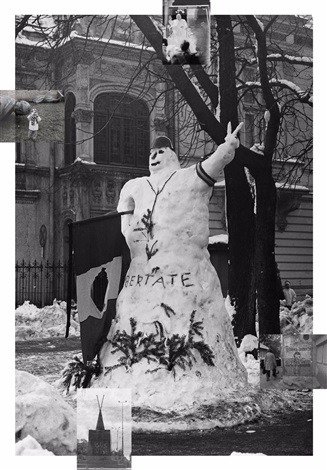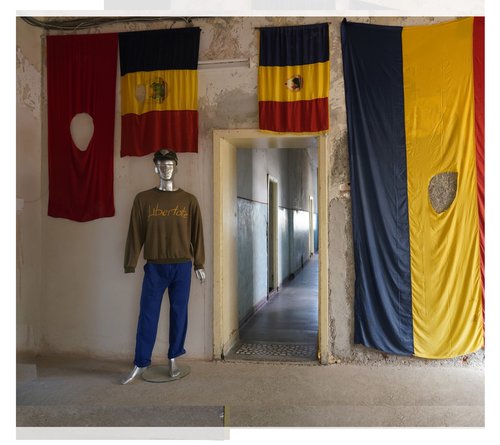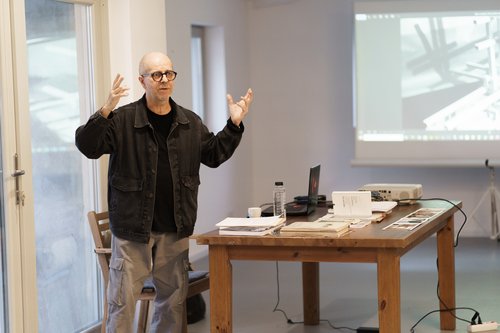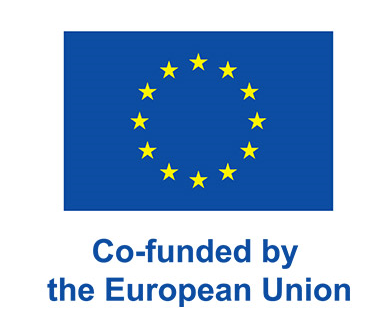Residency in Bucharest with Iosif Kiraly: The Hole in the Flag Remains a Symbol of the Revolution

Iosif Kiraly participated in the (In)visible Traces. Artistic Memories of the Cold War project during a month-long residency from 1 to 28 February 2025. This residency, part of the Creative Europe initiative, was an exceptional opportunity to host Kiraly, a distinguished visual artist, architect, and professor known for his conceptual and experimental approach to photography. His work explores themes of memory, time, and perception, providing unique insights into historical and cultural narratives. As one of the founders of the Department of Photography and Dynamic Imaging at the National University of Arts in Bucharest, Kiraly has made significant contributions to both academia and the arts. His career includes collaborations with groups such as subREAL, and his works are held in important public and private collections in Romania and internationally.
During the residency, Kiraly investigated the relationship between memory, history, and cultural heritage. He led workshops aimed at inspiring local youth and promoting creative expression. In addition, he developed new artworks that connected cultural and historical sites to contemporary artistic discourse. The residency concluded with a final workshop where Kiraly presented his latest works, Libertate and The hole in the flag remains a symbol of the revolution, offering fresh perspectives on how memory is preserved and reinterpreted through art.
The presentation and workshop provided an in-depth exploration of the Romanian art scene from the 1970s to the 1990s, focusing on the connections between mainstream, alternative, and underground art movements during and after the communist era. The session combined historical analysis with personal experiences, highlighting key exhibitions, underground artistic actions, and the transition into the post-revolutionary period.

On 28 February, the workshop began with an overview of government-approved art exhibitions, which were instrumental in promoting the communist regime’s ideology. These included commemorative, national, and regional exhibitions, as well as “alternative” exhibitions that were still authorized by the regime, such as Scrierea, Studiu 1 & 2, Spațiul Obiect, Spațiul Oglindă, Om-Oraș-Natură, and Mobil Fotografia. While these exhibitions allowed for some artistic experimentation, they remained within the limits imposed by the authorities. The event also highlighted a shift towards more experimental and critical art practices through significant exhibitions associated with A35, including Baia Mare 1988, Alternative, Tinerii Artiști și Fotografia, Fumul, and Mobil Fotografia. These exhibitions served as a counterpoint to official art, providing artists with greater freedom of expression while still navigating state restrictions.
The discussion further covered underground artistic actions that took place in unconventional spaces and in nature, as well as the Mail Art network, which connected Romanian artists with international peers despite government surveillance. Particular emphasis was placed on the underground scene in Timișoara and the transformation of Romania’s art landscape after 1989, highlighting the role of Revista Arta, the Soros Center for Contemporary Art, and Zona performance festivals. The workshop offered participants, mostly young people and students, the chance to engage with Mail Art techniques, encouraging creativity and collaboration.
The event successfully provided an engaging and comprehensive overview of the Romanian art scene from the 1970s through the 1990s, balancing historical context with personal testimony and interactive components. It highlighted the challenges, creativity, and resilience of artists who worked within state-imposed restrictions, participated in underground movements, and contributed to the cultural transformation following the fall of communism.
Iosif Kiraly’s participation in the project made a significant contribution to the ongoing dialogue about cultural heritage and artistic memory, leaving a lasting impact on both the local community and the broader field of contemporary art.
The residency and associated events took place at the Anca Poterașu Gallery in Bucharest, Romania.
________
This residency was co-funded by the European Union. The views expressed are those of the authors and participants and do not necessarily reflect the official position of the European Union or the European Education and Culture Executive Agency (EACEA). Neither the European Union nor EACEA can be held responsible for any content presented.





